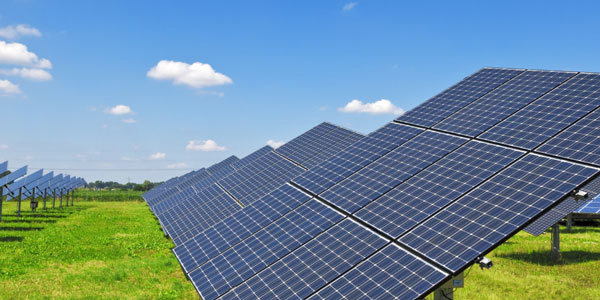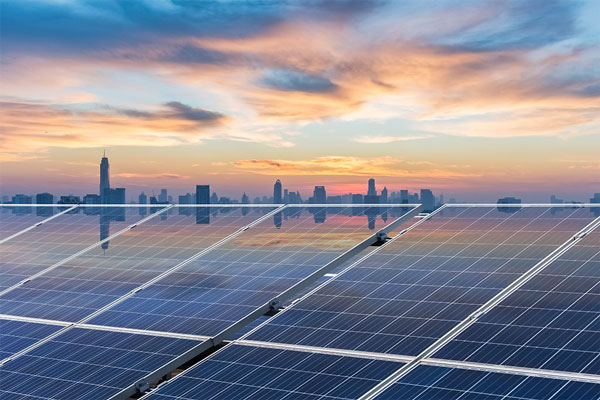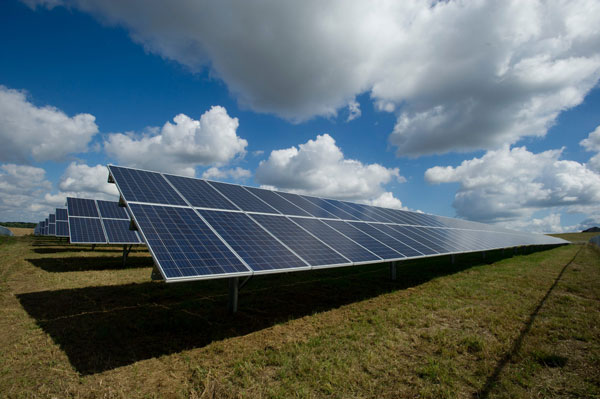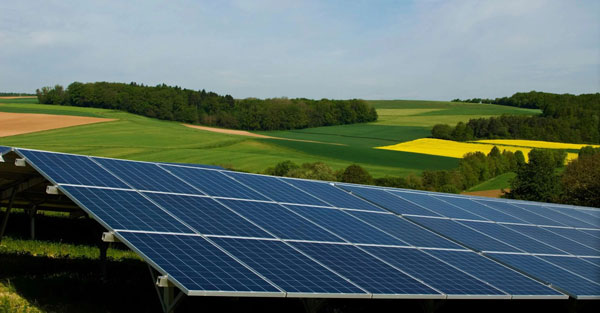Tough Solar Panels for Arctic Conditions
Particularly in Arctic conditions, solar panels intended for tough environments are required to endure and survive extremely cold, extremely windy, and have low lighting conditions. This paved the way to the development of certain technologies and materials that will make them more durable and give maximum performance in those harsh of environments.
Enhanced Material Design
For solar panels designed for cold, cloudy surfaces, a key feature lies in the materials used to resist temperature stresses while maximising yields in regions that do with the light. For instance, panels often use advanced photovoltaic (PV) cells that can efficiently produce electricity from low solar angles. The data suggests up to 10% more energy can be captured in the winter months with these specialized cells over the standard PV cell.
Robust Structural Features
To make it through wind and snow load strong frames incorporating reinforced glass is important for Arctic dwellings. This last can be observed in the deployment of panels by on the arctic research station on Svalbard, Norway where panels were fitted with an aerodynamic designs to reduce wind loading and a self tilting mechanism to allow snow to shed.
Energy Storage Tailored to your Needs
The storage of energy is of prime importance in Arctic locations since the long nights can extend for months without a break. Systems also come available with high capacity batteries and creative power management systems which will keep the energy flowing on a constant basis. A project installed this year in Alaska is using lithium-ion batteries to store enough energy to run thousands of home without sun for two weeks straight.
Release and Security Best Practices
Immensely well considered planning and logistical robustness is needed for any deployment to remote Arctic sites. The panels are shipped during the few weeks of Arctic summer through ice-class vessels. Remote monitoring technologies enable streamlined maintenance protocols that can be adjusted in real time with minimal physical intervention-necessary for an environment where weather can severely restrict access.
Salt-Tolerant Panels for Coastal Areas
The biggest challenge on solar panels in coastal areas comes from the salt mist and the moist environment. Panel design and materials have become increasingly innovative to counteract the effects and promote a long-life and efficient performance in such conditions.
Corrosion-Resistant Materials
Not only are the materials the solar panels use highly resistant to corrosion, but the architecture of the solar panels is crucial for coastal regions. Aluminum frames are usually anodized to protect against salt related corrosion. LongevityIn terms of longevity, Cons:This material choice adds as much as 30% to the expected lifespan of the panel in research compared to the lifespan of non-anodized frames particularly in coastal environments.
Protective Coatings
In the case of these solar panels near the water, they are given special coatings that keep salt or water from the surface, and ensure that salt is not left behind in any water spots left behind. These coatings also help with cleaning the panels, to allow ease of cleaning, and all the available sunlight is absorbed. One such implementation of this technology comes in the form of solar farms built along the Florida coastline: those fitted with hydrophobic-coated panels produce 15% more output than similar setups with uncoated panels.
Installation Techniques You Need to Care About
The manner in which the panels are installed in coastal regions also changes to accommodate for the high moisture and possibility of storm surges. The high mounting system is employed to stop the panels from drowning and maintain the presence of salt and waste to a minimum In coastal Japan solar systems are mounted 1 meter above the ground to avoid tidal surges and frequent heavy rains.
Improved Support and Maintenance Practices
In coastal areas, the salty atmosphere will eat away at it over time if it is not properly maintained. It means regularly checking the panels and cleaning it to keep the salt away as salt can really damage a solar absorption. Technicians keep panels shiny with fresh water sprays and delicate, soft brushes that clean panels without abrasive scouring.

Efficient Options for Cloudy Areas
When it comes to operating solar panels in areas known for the large amount of cloud coverage Solar panels efficiency suffers through the methods described here are not suitable to it. Not all solar companies install panels the same way, and quality technology and strategic installation techniques are essential to maximizing your solar energy output in a low sunlight environment.
Cutting-edge PV Technologies
In cloudy environments, it is important to use highly efficient photovoltaic (PV) technologies including bifacial cells with solar panels and thin-film panels. This can increase energy yield by up to 30%, especially on cloudy days where light is scattered, short of direct at the face of the solar panel. In addition, thin-film panels are especially well-suited for diffuse light conditions because they continue to perform at higher efficiencies than traditional crystalline silicon panels.
Smart Tracking Systems
Introducing smart tracking systems can considerably enhance the energy harvesting of these solar panels in such regions. Bifacial solar panels can be set on solar trackers, which as their name suggests, rotate to face the sun as it moves across the sky. Seattle is one example: installations with dual-axis trackers there achieve 45% higher annual energy production than fixed systems.
Hybrid Energy Systems
Hybrid-systems that are a combination of solar power with other sources of energy, like the wind or hydroelectric ensure non-stop power in even cloudy regions. Most notably, Portland, Oregon is home to an application of this type, where a solar-wind hybrid system ensures a constant output with the help of a localized wind turbine when cloudy weather reduces the power output of the solar arrays.
Optimized Installation Layout
For sites in cloudy climates, it is important to design the layout of the installation to capture as much light as possible. The argument is usually that panels are spaced to avoid shading, which is often more spread out and they are often rotated to the best angle for capture of the more diffuse solar radiation. An example would be a very recent project in northern Germany that uses an unusual offset arrangement to allow for better spread of light at various times of day, improving efficiency.
Compact Designs for Urban Rooftops
Because urban areas are small, design sprouting solar panels should be considered compact. The designs make the most of roof space - limited in an urban environment - and how cities can contribute to renewable energy generation.
Integrated Photovoltaics Systems
Urban locations require the incorporation of solar technology in to building materials, essentially, Integrated photovoltaic (PV) systems. For instance, solar shingles and tiles can serve as roofing material effectively replacing traditional materials and saving also the function of power generation. Buildings in San Francisco are each producing about 20% of their own annual electricity from their own roofs, and all new buildings are required to be solar-ready to produce one third of their energy directly onsite.
Vertical Solar Solutions
Vertical solar panels are just one more space-saving option that works well in urban environments. The panels are installed on the sides of buildings, that takes up vertical spaces that are otherwise not feasible to use. Vertical installations in downtown high-rises in New York City, for example, are also taking advantage of capturing sunlight from low angle sun creating more harvestable solar hours per day.
Modular Panel Systems
The design flexibility offered by modular solar panels allows for custom applications appropriate for individual and/or contoured urban rooftop project conditions. This system is also scalable, so you can purchase it even if you can only afford a few panels/renderer that way, you can upgrade in the future as you can invest in more energy. The modular process in Tokyo has been successful, with 40% of residential buildings coming on board for solar power in just five years.
Smart Inverter Technology
For compact urban solar installations, smart inverters can be more efficient, converting power better and managing interactions with the grid. Enter inverters that dynamically adjust the power output based on instantaneous energy demand and supply conditions, thereby improving system efficiency substantially. In chicago, smart inverters were shown to potentially increase system efficiencies by as much as 25% in the dynamic urban energy context.
Portable Systems for Nomadic Populations
For nomadic populations, portable solar systems are groundbreaking, giving them power that is reliable and does not require immovable infrastructure. This is accomplished by designing the systems to be lightweight, durable, and easy to deploy, providing long-term solutions in communities that repeatedly move.
Loveseat Is Lightweight And Foldable
Portable solar technology hinge on the evolution of light and fold solar panels. By these flexible panels, I mean made from flexible materials thin-film photovoltaic cells that can be rolled up and taken to other places with ease. A Mongolian steppe community employs soon-to-be 5kg-parts which can be installed in ten minutes on their yurts and mobile homes.
Integrated Power Storage
Battery Storage: Portable systems are powered by batteries to ensure usability round the clock. The batteries, which harbor solar energy gathered in daylight hours save for after the sun sets, are fundamental in places with long, dark nights or with unpredictable weather. A well-known system is that of the Bedouins of the Middle East, with many lithium-ion batteries capable of storing energy for 48 hours of operation without interruption.
Plug-and-Play Functionality
Nomadic populations value ease of use Most portable solar systems are designed to be plug-and-play in order to make the set up and operation of the system fairly easy to use with no technical understanding. Most of these systems come in a package with cables, connectors, and charge controllers, so all components needed for its installation comes as a complete set, making it easy and instant to have power.
Durable Construction
Given how much it's going to be banged around and exposed to the elements, especially in a portable solar system, durability is pretty important. To be able to keep against weather those and that must be developed with fortifying substances, in addition to certain protective coatings to withstand dust, rain, and impacts. Another design, commonly used in Saharan regions, involves a rugged, water-resistant outer shell that can give structural support as well as protection from sandstorms.

Wearable Solar Technology for Personal Power
This is a considerable leap forward in personal energy solutions and wearable solar tech that makes it possible to power up on the move. This is a technology that allows solar cells to be developed as part of clothing or accessories - perfect for anyone who spends a lot of time outside, outworkers rurally and those off-grid.
Solar-Integrated Clothing
Swiss researchers have made a combination of flexible photovoltaic fabric patches, which is common in clothes using solar panels. These patches are attached in sunny parts of the clothing, such as the back or shoulder. One of the former is the sort of jacket created for hikers: this one (see video) has solar cells on the back that will charge an iPhone in two hours of sunlight.
Solar-Powered Accessories
There's even been solar-powered backpacks and hats on the market as well. Connected with solar panels, it provides a new way to capture solar energy anywhere and leave world a greener spot. For comparison, a commonly known solar backpack on the market now is able to harness do to capture adequate solar energy to juice up a hand help devices, compact digital cameras, and even a few laptops.
Efficient Energy Conversion
To make wearable solar practical, the devices often have high-efficiency converters that help to deliver the power from the solar cells to the device that you are charging. These devices are specifically geared towards decreasing the energy that is lost, ensuring that a great proportion of the solar energy that is captured can be used. These developments have increased conversion efficiency up to 22%, comparable with regular, rigid solar panels.
Strength and Weatherability
As with any wearable tech, wearable solar technologies need to last, and able to be in weather. Solar-integrated clothing and accessories are made out of materials that are water-resistant and can withstand the harshest of climates, regardless of it being under the scorching sun or drenching rain. The latest is a solar hat that is built around a resilient and waterproof photovoltaic film that can keep on charging even if it's soaking wet.





